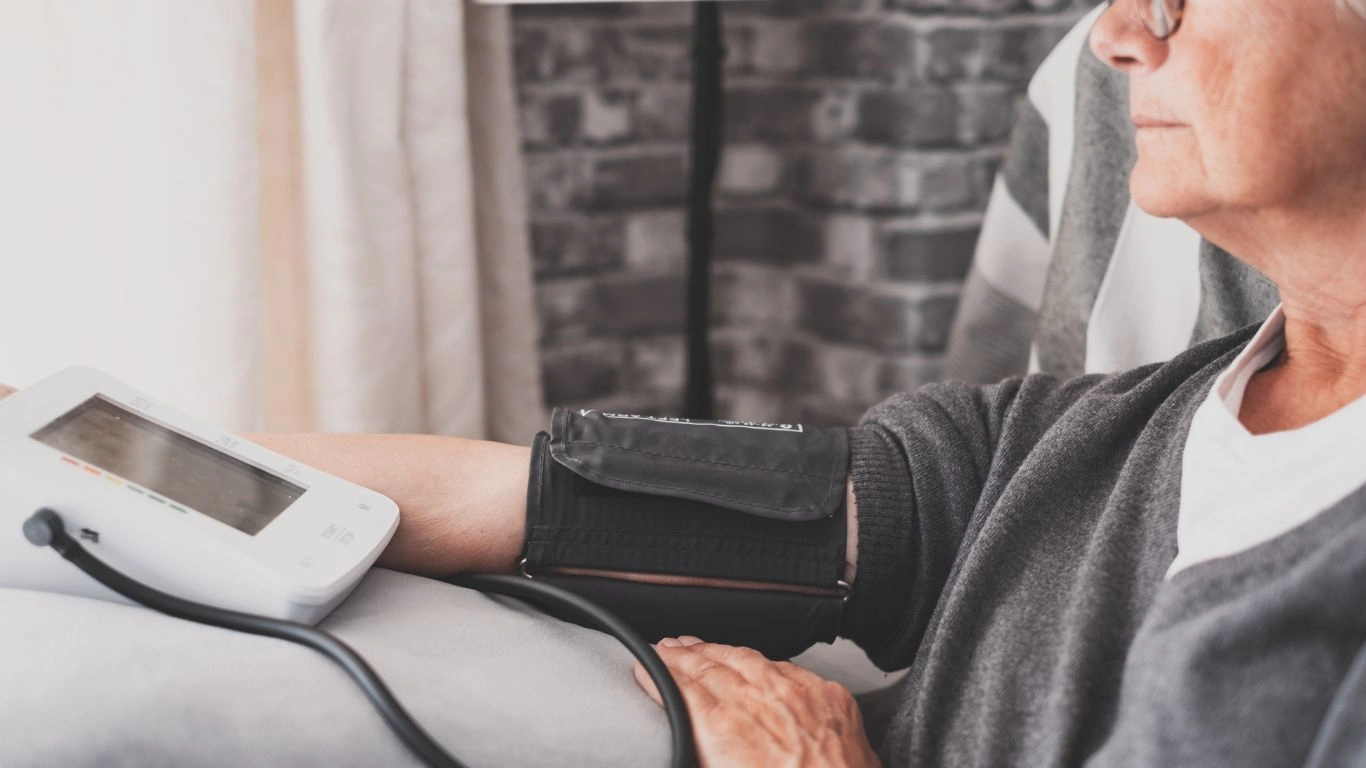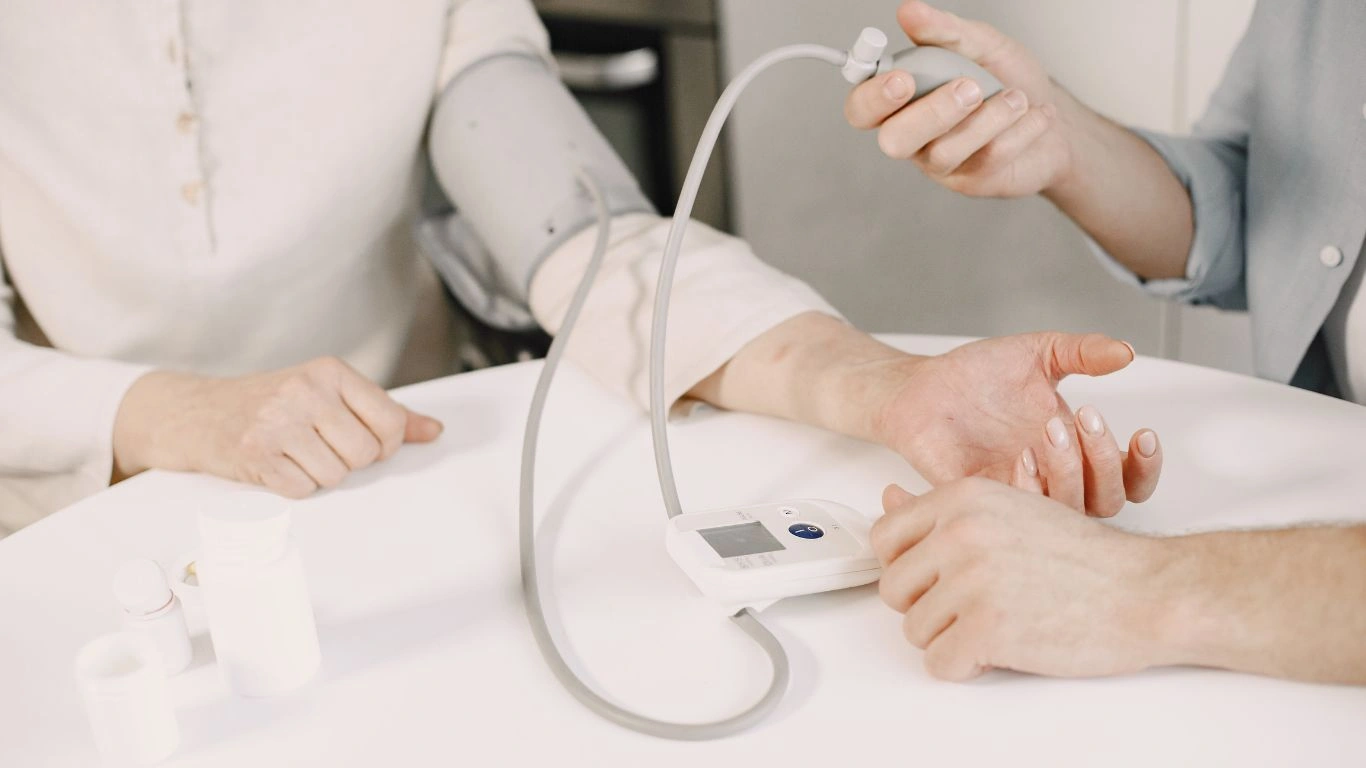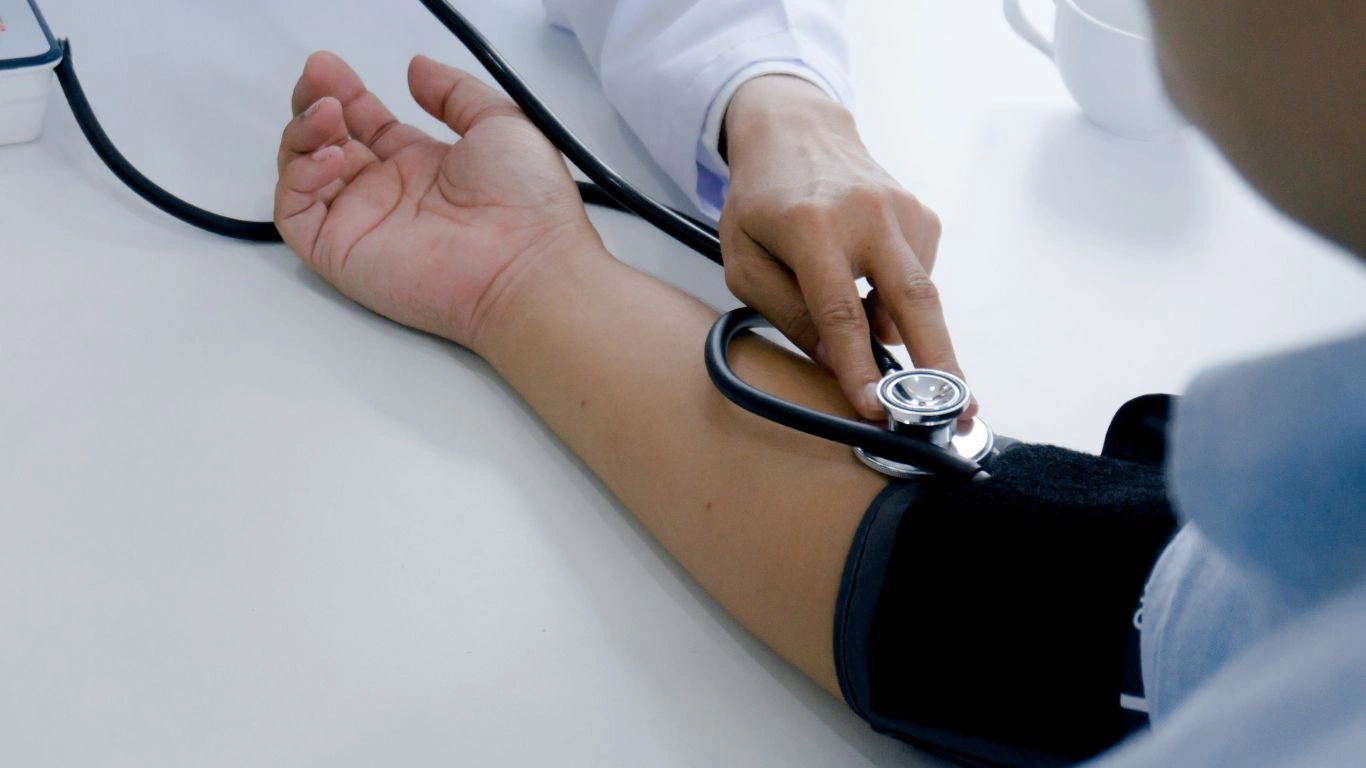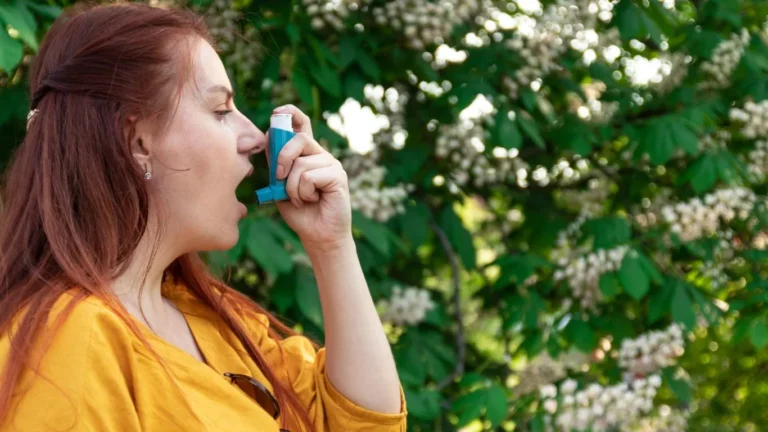How Cold Weather Affects Blood Pressure: Tips to Keep Your Numbers in Check
As a hypertension expert, I’ve seen countless cases of high blood pressure and understand the various factors that influence blood pressure readings. One such factor that many people overlook is how cold weather affects blood pressure readings. The cold can have a surprisingly significant impact on your health, especially if you’re managing hypertension. In this article, we’ll dive into the ways cold weather influences your blood pressure, and what you can do to stay safe and healthy even when temperatures drop.
Understanding the Link Between Cold Weather and Blood Pressure
It’s not uncommon for people to see a rise in their blood pressure readings as the temperature decreases. But why does this happen? Well, it all comes down to how your body reacts to cold weather. When exposed to colder temperatures, your body works harder to maintain its core temperature. One of the ways it does this is by narrowing blood vessels, a process known as vasoconstriction. This narrowing of the blood vessels increases resistance in your circulatory system, making it harder for blood to flow freely. As a result, your heart has to pump harder to move blood throughout your body, leading to an increase in blood pressure.
From my experience, many of my patients have expressed concern over seasonal changes and their impact on blood pressure. It’s understandable—when the cold rolls in, it’s easy to get caught off guard by those sudden fluctuations. However, it’s important to understand that this temporary rise in blood pressure doesn’t necessarily mean you’re at risk for a hypertensive crisis. But, for those already dealing with high blood pressure, it’s a good idea to keep an eye on it during the colder months.
How the Body Reacts to Cold Weather
The human body is quite resilient, but it’s also incredibly sensitive to changes in temperature. Cold weather triggers a natural survival mechanism: it tries to conserve heat. To do this, your body constricts blood vessels in an attempt to preserve warmth. This reaction can lead to increased blood pressure. But that’s not all—the cold can cause other effects that contribute to elevated readings:
- Increased Heart Rate: When the body’s core temperature drops, it triggers an increase in heart rate. The faster your heart beats, the more pressure is exerted on the blood vessels, which can raise blood pressure.
- Reduced Blood Flow: Cold weather causes blood vessels to constrict, reducing blood flow to extremities. This can increase resistance in the vascular system, which in turn raises blood pressure.
- Potential for Dehydration: Even in cold weather, dehydration can be an issue, especially if you’re not drinking enough fluids or if your body uses extra energy to maintain warmth. Dehydration can thicken the blood, making it harder for the heart to pump effectively, which can lead to higher blood pressure.
The Impact of Cold on Blood Pressure Readings

So, how does this all translate to the actual blood pressure readings you see at the doctor’s office or when you check your own blood pressure at home? If you’re measuring your blood pressure in cold weather without taking the proper precautions, you might notice higher readings than usual. This can be a bit of a concern, especially if you’re managing hypertension and already have concerns about controlling your blood pressure.
It’s important to remember that blood pressure is not a fixed number—it can fluctuate based on a number of factors. Temperature is one of them. That’s why, if you’re measuring your blood pressure during the winter, it’s important to make sure you’re comfortable and adequately warmed up before taking a reading. Cold temperatures can cause a temporary spike, but this doesn’t necessarily mean that your blood pressure is chronically high. If you’re consistently getting high readings in cold weather, it’s worth consulting your doctor to make sure that there’s not an underlying issue.
Tips for Accurate Blood Pressure Readings in Cold Weather
If you’re worried about how cold weather affects your blood pressure readings, there are a few simple steps you can take to get the most accurate reading possible:
- Warm Up Before Measuring: If you’re taking your blood pressure at home, it’s important to warm up first. Spend a few minutes in a warm environment before you start, and avoid measuring your blood pressure right after coming in from the cold.
- Avoid Tight Clothing: Wearing tight clothing, especially around the arm, can lead to inaccurate readings. Make sure you’re wearing loose, comfortable clothing when taking your blood pressure.
- Stay Calm: Stress can also affect your blood pressure. Take a few deep breaths and relax before measuring to avoid any spikes that may be caused by anxiety or tension.
- Use the Right Equipment: Ensure that your blood pressure cuff is the right size for your arm. A cuff that’s too small or too large can give inaccurate readings, especially in cold weather.
The Risk for People with Hypertension
For individuals already managing high blood pressure, cold weather can pose a unique challenge. In some cases, the cold may exacerbate existing hypertension, putting you at greater risk for complications like heart attack or stroke. But don’t worry—there are steps you can take to protect yourself and keep your blood pressure under control during the colder months.

If you already have high blood pressure, make sure you’re staying on top of your condition by checking your blood pressure regularly and following your treatment plan as prescribed by your doctor. It’s also a good idea to monitor your lifestyle habits, such as diet and exercise, to ensure that you’re supporting your cardiovascular health even when the temperatures drop.
Remember, while cold weather can affect blood pressure readings, it’s just one of many factors that can influence your numbers. If you’re feeling concerned or noticing significant changes in your blood pressure readings, it’s always best to consult with a healthcare professional to ensure everything is in check.
Other Environmental Factors to Keep in Mind
While we’ve focused on cold weather for now, it’s also important to remember that environmental factors like hot weather, altitude, and humidity can also influence your blood pressure readings. If you live in an area with extreme weather conditions, it’s essential to keep an eye on how your blood pressure is responding and make necessary adjustments to your lifestyle to stay healthy.

By staying informed and taking proactive steps, you can manage your blood pressure effectively, regardless of the season. In the next sections, we’ll explore more ways to stay healthy and keep your blood pressure in check, even during the chillier months.
Staying Active in Cold Weather
One of the biggest challenges during colder months, especially for people managing high blood pressure, is staying active. Exercise is a key part of maintaining good cardiovascular health, but when the temperature drops, it can be tempting to skip your workout or hibernate on the couch with a warm blanket. As a hypertension expert, I can’t stress enough how important it is to keep moving, even when it’s chilly outside.

Physical activity helps regulate blood pressure and promotes better heart health overall. Regular exercise strengthens the heart, allowing it to pump more efficiently and lowering the resistance in your blood vessels. But, cold weather can complicate things. If you’re braving the outdoors for a jog or a brisk walk, be sure to dress in layers to keep your body temperature stable. That’s a trick I recommend to all my patients—dressing in layers helps to keep you warm while allowing sweat to evaporate, preventing the chill from creeping in.
Indoor Activities to Stay Active
If going outdoors just isn’t an option due to the cold, don’t worry. There are plenty of indoor activities you can do to stay active and support your heart health:
- Walking or Jogging on a Treadmill: If you have access to a treadmill, this is a great way to keep your blood flowing without braving the cold.
- Yoga: Not only does yoga help with flexibility and stress reduction, but it’s also excellent for improving circulation and heart health.
- Strength Training: Weight lifting or resistance training can help you build muscle, which in turn boosts metabolism and supports heart function.
- Dance: Dance is a fun way to get your heart rate up while staying indoors. Plus, it doesn’t feel like a workout, making it an easy way to stay motivated!
It’s all about finding what works for you, and the best part is that indoor activities can be just as effective as outdoor ones when it comes to blood pressure management. So, don’t let the cold weather be an excuse to slow down. Keep moving to keep your heart healthy.
Dietary Considerations in Cold Weather
Another key factor when managing your blood pressure during the colder months is paying attention to your diet. When it’s chilly outside, we tend to crave hearty, comforting meals—think stews, soups, and other rich foods. While these foods can be warming and satisfying, they may also be high in salt or fat, which can negatively impact blood pressure.

During my years as a hypertension specialist, I’ve seen many people unwittingly raise their blood pressure by eating high-sodium foods, especially during the winter months. The good news is that you can enjoy the cozy comfort of winter foods without compromising your health. Here are some dietary tips to help you manage your blood pressure, even in the cold weather:
Choose Heart-Healthy Foods
When the temperatures drop, it’s easy to turn to rich, heavy meals, but that doesn’t mean you have to sacrifice your health. Focus on heart-healthy foods that can help maintain a healthy blood pressure:
- Leafy Greens: Kale, spinach, and other greens are packed with potassium, which helps balance out the negative effects of sodium and reduces blood pressure.
- Whole Grains: Oats, quinoa, and whole wheat are excellent sources of fiber, which helps regulate blood pressure.
- Fatty Fish: Salmon, mackerel, and sardines are high in omega-3 fatty acids, which have been shown to lower blood pressure and reduce inflammation.
- Nuts and Seeds: Almonds, walnuts, and flaxseeds are packed with healthy fats and magnesium, both of which are essential for blood pressure regulation.
- Low-Fat Dairy: Opt for low-fat milk, yogurt, and cheese to keep your calcium intake up without the added saturated fats.
Limit Sodium and Processed Foods
While you might be tempted to indulge in comfort foods that are rich in salt, try to limit your sodium intake. Excess sodium can cause your body to retain water, which puts extra pressure on your blood vessels, raising your blood pressure. Instead of reaching for processed or canned soups, consider making your own at home with fresh ingredients. You can always add herbs and spices for flavor instead of salt. It’s a small change, but it makes a big difference!
If you’re craving something warm and comforting, I recommend making a big pot of vegetable stew, chicken soup, or a hearty chili with plenty of fresh, wholesome ingredients. Not only will it satisfy your cravings, but it’ll also help you keep your blood pressure in check.
The Role of Hydration in Cold Weather
Staying hydrated is just as important in the winter as it is in the summer, even if we don’t feel as thirsty. In fact, the cold can sometimes trick our bodies into thinking we don’t need as much water. However, dehydration can still cause issues for your blood pressure. If you’re not drinking enough water, your blood can become thicker, making it harder for your heart to pump effectively. This can lead to higher blood pressure readings.

So, even though it’s cold outside, make sure to drink plenty of water throughout the day. If you find plain water hard to stomach in winter, try herbal teas or warm water with a slice of lemon to keep hydrated. You can also eat water-rich foods like cucumbers, watermelon, and oranges, which can contribute to your daily fluid intake. Keeping your body well-hydrated helps maintain proper blood flow and prevents your blood pressure from spiking.
Managing Stress in Cold Weather
When it’s cold outside, it’s easy to feel stressed. The holidays, family obligations, or just the general winter blues can take a toll on your mental well-being. Stress is a well-known factor that can contribute to elevated blood pressure, so it’s important to find ways to unwind and relax, especially during the colder months.
From my personal experience with patients, I’ve found that finding a stress-relief routine can be one of the most effective ways to keep blood pressure in check. Whether it’s through meditation, deep breathing exercises, or simply taking time to read a book, managing stress is crucial for maintaining healthy blood pressure levels. In fact, I recommend setting aside time each day for relaxation, especially when the weather is less than inviting.
Preparing for Cold Weather: Smart Tips to Protect Your Blood Pressure
As someone who’s been working in the field of hypertension for years, I’ve seen how a little bit of preparation can go a long way in managing blood pressure during cold weather. Many of my patients have told me that they often don’t know where to begin when it comes to adjusting their routine in the winter. It’s easy to feel overwhelmed, but the good news is that with a few simple changes, you can help minimize the effects of cold weather on your blood pressure. In this section, I’ll share some practical, everyday tips to make sure your blood pressure stays in check no matter how chilly it gets outside.

Layer Up for Warmth
The first and most obvious tip is to make sure you stay warm! When you’re exposed to cold temperatures, your body works overtime to keep you warm, which, as we discussed earlier, can raise your blood pressure. Wearing layers not only helps regulate your body temperature but also keeps your blood vessels from constricting. I recommend using the “layering method”—start with moisture-wicking base layers, followed by an insulating layer (like fleece or wool), and finish with a windproof and waterproof outer layer. This combination will help trap heat close to your body and allow moisture to escape, keeping you warm without causing your body to overheat.
Another thing to keep in mind is to wear appropriate clothing for your extremities. I’ve had many patients complain of cold hands and feet during the winter, but keeping your hands, feet, and head warm is just as important as keeping the core warm. Consider investing in warm gloves, thick socks, and a hat or earmuffs to avoid feeling chilly. It might seem like a small thing, but your body will thank you.
Keep Track of Your Blood Pressure
Monitoring your blood pressure regularly, especially during colder months, is crucial. For those of us who live with hypertension, it’s vital to keep an eye on our numbers at home, not just during doctor’s visits. Home blood pressure monitors have become much more affordable and accurate in recent years, and they can give you the peace of mind you need. However, don’t be surprised if your readings are a little higher after being out in the cold. It’s a natural response to the temperature change, but consistent high readings still warrant a conversation with your healthcare provider.
If you’re not already tracking your blood pressure at home, consider starting now. Take your blood pressure at the same time every day, preferably in the morning before you’ve had anything to eat or drink. Make sure to rest for a few minutes before you take the reading, and be seated in a comfortable position. This consistency will help you spot any trends or significant changes in your blood pressure.
Managing Your Mental Health in the Cold
Winter months can also bring about a decrease in mood, and I’ve seen firsthand how that can affect blood pressure. The lack of sunlight and the cold can cause seasonal affective disorder (SAD), or just a general sense of feeling down. Stress and poor mental health can directly impact blood pressure, so it’s essential to take proactive steps to keep your mental state balanced during the colder months.
As I always tell my patients, mental health is just as important as physical health. If you’re feeling stressed, anxious, or depressed, make sure you seek out support. Talking to a therapist or counselor can be incredibly beneficial, especially when you’re facing the seasonal challenges of winter. Sometimes it’s the little things that make a big difference—like a warm cup of tea, a good book, or spending time with loved ones. I also recommend focusing on hobbies or activities that bring you joy, even if it’s just watching a favorite show or starting a new craft project.
Brighten Your Environment
If you suffer from the winter blues, one of the easiest ways to help your mental health is by brightening up your environment. I often recommend using light therapy lamps to help boost mood, as they simulate sunlight and can help regulate your body’s circadian rhythm. Even small changes, like adding a few extra lamps or using brighter light bulbs, can lift your spirits and keep your stress levels down.
Get Outside (When You Can)
While the cold weather can make it harder to get outdoors, if possible, try to spend some time outside each day. It doesn’t have to be a strenuous workout; a simple walk in the fresh air can work wonders for your mental and physical health. Exposure to natural light, even on overcast days, can help regulate your mood and provide much-needed vitamin D. Plus, taking a walk gives you the opportunity to get your body moving and release endorphins, which are natural mood boosters.
Know When to Seek Medical Help
It’s essential to recognize when it’s time to ask for help. If you notice consistent increases in your blood pressure despite making lifestyle adjustments, don’t hesitate to reach out to your healthcare provider. I always advise my patients to trust their instincts—if something doesn’t feel right, it’s better to be safe than sorry. While cold weather can cause temporary increases in blood pressure, significant changes or persistently high readings could indicate that your hypertension needs more attention.

In addition, if you experience any of the following symptoms, seek medical attention immediately:
- Severe headaches
- Shortness of breath
- Chest pain
- Blurred vision
- Feeling dizzy or lightheaded
These could be signs that your blood pressure is dangerously high and requires immediate intervention. Never hesitate to reach out to your healthcare provider if you’re concerned about your health. They can offer guidance and adjust your treatment plan if needed.
References and Disclaimer
For more information on managing hypertension in colder weather, be sure to consult resources such as the American Heart Association and other trusted health organizations. Always consult your doctor before making any changes to your medication or lifestyle, especially if you have a pre-existing health condition.
Disclaimer: This article is for informational purposes only and is not intended to provide medical advice, diagnosis, or treatment. Always consult with a qualified healthcare provider for personalized advice regarding your health and wellness.

Dr. Gwenna Aazee is a board-certified Internal Medicine Physician with a special focus on hypertension management, chronic disease prevention, and patient education. With years of experience in both clinical practice and medical writing, she’s passionate about turning evidence-based medicine into accessible, actionable advice. Through her work at Healthusias.com, Dr. Aazee empowers readers to take charge of their health with confidence and clarity. Off the clock, she enjoys deep dives into nutrition research, long walks with her rescue pup, and simplifying medical jargon one article at a time.






